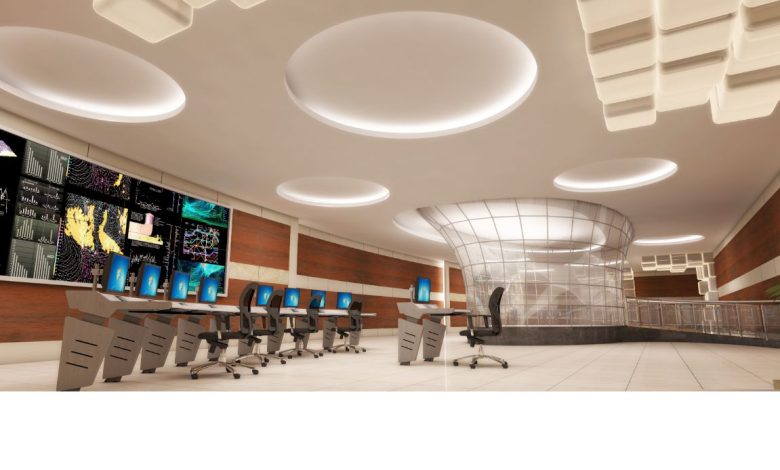6 Factors to Consider in Your Control Room Design

Control rooms are critical for organisations to monitor multiple information streams efficiently and effectively and make accurate mission-critical decisions. With an ever-growing number of content sources and applications to handle, as well as collaborative information integration requirements, today’s control rooms must enable efficient and cost-effective system management while also providing optimum operator comfort.
The primary purpose of a well-designed and forward-thinking control room is to guarantee that operators have the best possible experience. While this is a continuous concern, the current rise in COVID-safe practises within enterprises has raised the bar on room design and functionality, requiring a review of additional rules and factors that organisations should evaluate when creating mission-critical spaces:
Centralized control
In the design of a control centre, centralization is an important factor to consider. While some operational teams will disperse over multiple sites, centralization brings all of a team’s branches together in one location. This facilitates communication and coordination among the many operations. A speedier system is build by overseeing the same information in a single control room where everyone is accessible to one another. Designing a control room with centralization in mind can decrease cost since you’ll only have one room to furnish. Keep in mind all of your operators, and make sure they have enough room to accomplish their work efficiently.
Ergonomic workspace
To begin with, ergonomics is more than just having a nice chair. Ergonomics is taken into account while constructing a control room’s layout. Similarly, the workstations themselves, including the furnishings that employees and operators would use daily, must be considered. The comfort and demands of the operators must be considered when designing the chairs. The technicians’ efficacy and productivity will be harmed by stress and tiredness caused by non-ergonomic sitting. It can also lead to more occupational injuries and less accuracy.
Furthermore, ergonomic considerations in the space layout are critical. The layout of the workstations, access to video monitors, how staff move around the space, traffic patterns within the room, and the amount of physical space allocated to each operator will all play a role in the control room’s performance. Remember to incorporate ADA regulations into the control room design to avoid costly retrofitting later.
Room comfort factors
The overall design of a control room is really important. The maintenance of a healthy circadian rhythm is encouraged by lighting levels. Human-centric lighting (HCL) is a method that analyses all aspects of how lighting affects the welfare, productivity, and comfort of control room operators. Circadian rhythm is critical for operators working late-night shifts, and using technology like HCL can help promote natural circadian rhythm while also reducing overall weariness, which can impair an operator’s ability to respond efficiently.
Advanced digital displays
Another important feature of a well-designed control room is the display. Displays display all of the vital information, which is why you’ll want to have numerous monitors in a space and make sure they’re visible to the right people. Because having your employees sit in rows can impede vision, several businesses are customising their digital displays. This will necessitate additional screens, but the risk of error is reduce as a result of this design approach. You should also think about the size of your displays as well as whether or not they have touch capabilities. Also, aim to keep display content so that operators spend roughly 70% of their time looking at the first tier displays, 20% on the second tier displays, and 10% or less on the third tier displays.
Reducing foot traffic
Minimizing foot traffic within the control room removes potential distractions for the operators. It also improves the overall health and security of the control room staff, from remoting or virtualizing PCs to break room and restroom design to installing a conferencing area within the control room itself. IT employees aren’t physically present in the control room to service PCs that have been remoted or virtualized. Installing conferencing services within the control room prevents personnel from leaving the secure area. Also the outside team members from entering the control room. In the event of a pandemic, this means there is a lower possibility of contagions is introduce into the control room.
Lighting
Good control room lighting should be as much a part of the design as the ceiling, walls, and floor. Quality ambient, homogeneous illumination. Which is a combination of fixtures such as indirect, task, and suspended lighting, is required for optimal lighting. Glare renders screens unreadable if all light emanates from the ceiling. In fact, rather than dealing with headaches and errors caused by glare, many operators will turn off lights and sit in the dark.
Furthermore, overall lighting dimming presets cooperate with operator preferences and lighting requirements throughout the day. One solution is to give low-, medium-, and high-level presets for adjusting ambient lighting levels while maintaining a consistent, low-level indirect light source. Instead of bouncing off screens, the lighting at the work surface can integrate into consoles and focus on documents. This helps operators work more efficiently by reducing eye strain.
When it comes to building a control room. There are a lot of things to think about in order to make your workplace the best it can be. Control room solutions in UAE can help you design the control room of your dreams and keep operations operating smoothly and effectively for many years to come.




